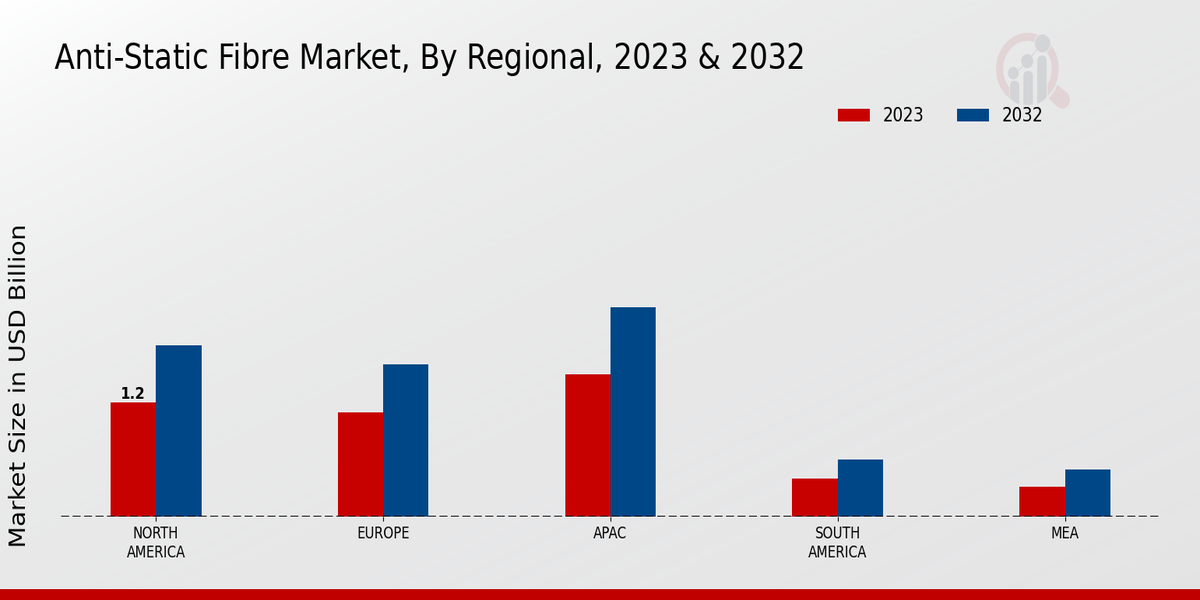Market Growth Projections
The Global Anti-Static Fibre Market Industry is poised for substantial growth, with projections indicating an increase from 4.94 USD Billion in 2024 to 7.98 USD Billion by 2035. This growth trajectory suggests a compound annual growth rate (CAGR) of 4.46% from 2025 to 2035. Such projections reflect the increasing adoption of anti-static solutions across various sectors, driven by technological advancements, regulatory compliance, and heightened awareness of ESD risks. The market's expansion is indicative of the critical role that anti-static fibres play in safeguarding sensitive electronic components and ensuring operational efficiency across industries.
Rising Awareness of ESD Risks
There is a growing awareness of the risks associated with electrostatic discharge (ESD) across various industries, which is driving the Global Anti-Static Fibre Market Industry. As organizations recognize the potential damage that ESD can cause to sensitive electronic components, they are increasingly investing in anti-static solutions. This heightened awareness is leading to a surge in demand for anti-static fibres in sectors such as electronics, textiles, and manufacturing. The market is projected to grow significantly, with estimates suggesting a rise to 7.98 USD Billion by 2035, as companies prioritize ESD prevention strategies.
Increasing Demand for Electronics
The Global Anti-Static Fibre Market Industry experiences heightened demand due to the growing electronics sector. As electronic devices proliferate, the need for anti-static solutions becomes paramount to prevent damage from electrostatic discharge. In 2024, the market is projected to reach 4.94 USD Billion, reflecting the industry's response to this demand. Manufacturers are increasingly integrating anti-static fibres into packaging and handling materials to safeguard sensitive components. This trend is likely to continue, as the electronics market expands, potentially driving the Global Anti-Static Fibre Market to an estimated 7.98 USD Billion by 2035, with a CAGR of 4.46% from 2025 to 2035.
Growth in Automotive and Aerospace Sectors
The automotive and aerospace industries are pivotal drivers of the Global Anti-Static Fibre Market Industry. As these sectors expand, the need for anti-static solutions becomes critical to ensure the reliability and safety of electronic components. Anti-static fibres are increasingly utilized in vehicle interiors and aircraft manufacturing to prevent electrostatic discharge, which can lead to malfunctions. The projected growth of these industries is expected to bolster the demand for anti-static materials. Consequently, the Global Anti-Static Fibre Market is likely to witness substantial growth, potentially reaching 7.98 USD Billion by 2035, as these sectors continue to innovate and expand.
Regulatory Compliance and Safety Standards
Regulatory frameworks governing the electronics and textile industries are becoming increasingly stringent, thereby propelling the Global Anti-Static Fibre Market Industry. Compliance with safety standards necessitates the use of anti-static materials in various applications, including cleanrooms and manufacturing environments. This regulatory push not only ensures worker safety but also protects sensitive equipment from electrostatic discharge. As industries adapt to these regulations, the demand for anti-static fibres is likely to surge. The market's growth trajectory appears robust, with projections indicating a rise to 7.98 USD Billion by 2035, driven by the need for compliance and safety.
Technological Advancements in Material Science
Innovations in material science are significantly influencing the Global Anti-Static Fibre Market Industry. The development of advanced anti-static fibres, which offer enhanced performance and durability, is reshaping the landscape. These innovations enable manufacturers to produce textiles that not only mitigate static electricity but also possess additional properties such as moisture-wicking and fire resistance. As industries increasingly seek multifunctional materials, the demand for these advanced fibres is likely to rise. This trend may contribute to the market's growth, with an anticipated increase to 7.98 USD Billion by 2035, reflecting the impact of technological advancements.

























Leave a Comment